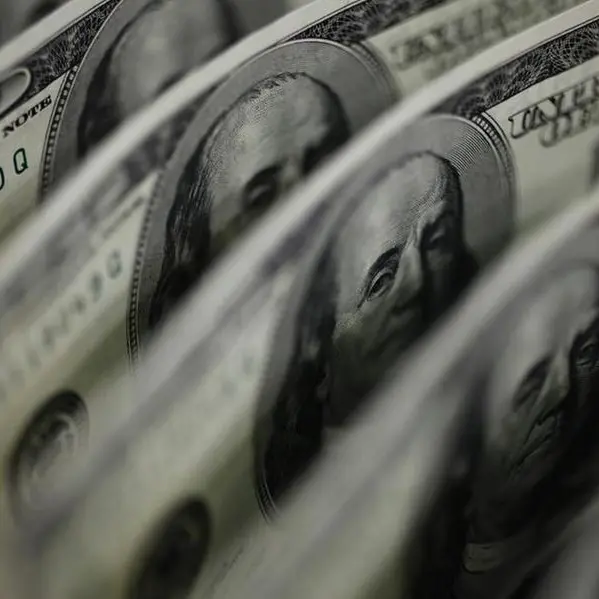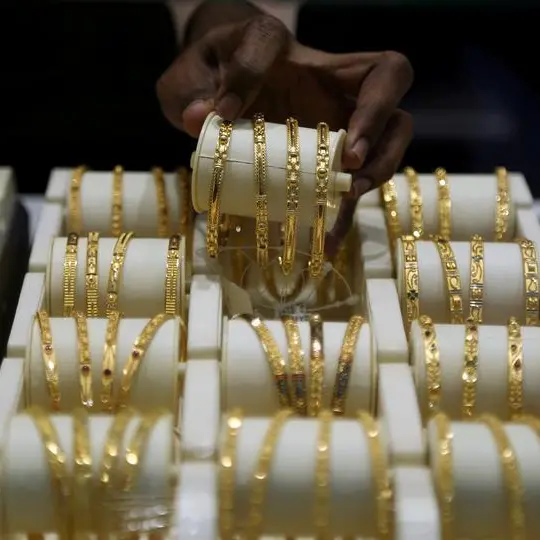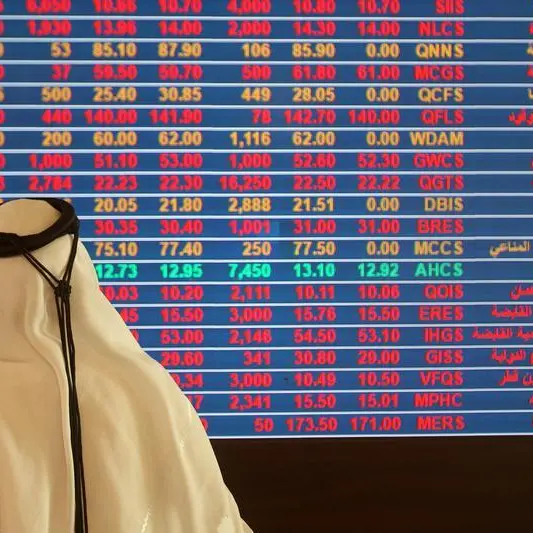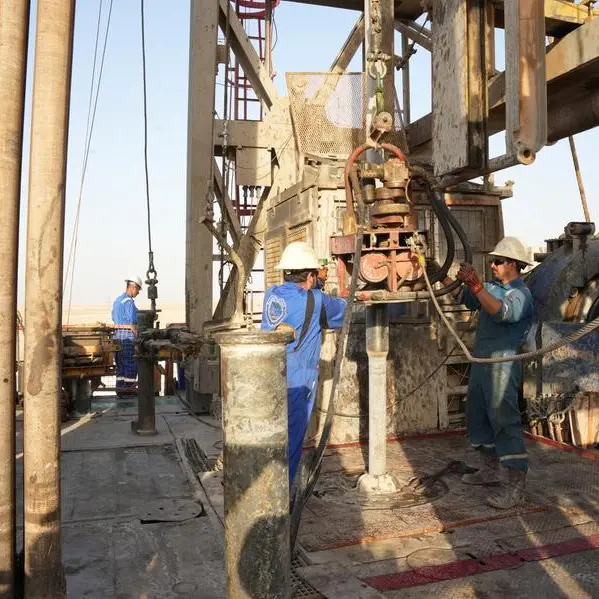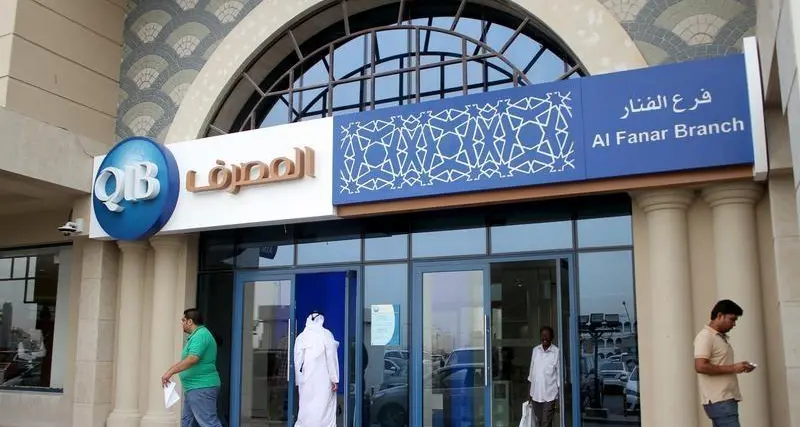Ratings agency Moody's estimated in a report released on December 5 that total sukuk issuance for 2017 would be around $95 billion, compared to just over $85 billion in 2016. Of this, more than $50 billion worth of sukuk were issued by sovereigns, amounting to 70 per cent of the total in 2017, compared to about 45.5 per cent in 2016.
“Sovereigns have underpinned a recovery in the global sukuk market this year, with their issuance increasing by 50 per cent in the first eight months of 2017,” said Christian de Guzman, a Moody's vice president and senior credit officer and one of the report's authors. Despite two years of growth, total sukuk offerings in 2017 will remain well below their peak level of close to $150 billion in 2012.
Countries of the Gulf Cooperation Council (GCC) drove the market's growth in 2017 with Saudi Arabia raising the lion's share of sukuk during the year with a total of $17 billion, or 40 per cent of global long-term sovereign sukuk issued in the first eight months of the year.
“The market has been dominated by sovereign issuers, and this is simply because of the drop in oil prices and increased deficits, and the GCC having to deal with the situation by cutting costs, introducing taxes or drawing from reserves,” Issam Altawari, managing partner at Kuwait-based Newbury Economic Consulting, told Salaam Gateway.
Other analysts agree. “Low oil is the big driver. The GCC is a key engine for the sukuk market and GCC economic and financing activity is heavily correlated with oil. Crude prices were above $100 for much of the earlier period compared to an average of $40-50 for the last couple of years,” Khalid Howladar, founder and managing director of Dubai-based risk, rating and Islamic finance consultancy Acreditus, told Salaam Gateway.
Outside the GCC, the traditionally strong sukuk market of Malaysia continues to hold its own although its value of issuance has dropped. Until August 2017, Malaysia issued sovereign sukuk worth $7.7 billion, compared with $9.5 billion in the first eight months of the previous year.
The trend is the same for Indonesia, which issued sukuk worth more than $4 billion between January and August this year, the third highest issuance volume after Saudi Arabia and Malaysia. This was a plunge from $11.6 billion in the whole of 2016.
WIDER INTEREST
Although the number of new entrants into the sukuk market has declined since 2014, Nigeria issued its first sukuk in 2017, and a number of sovereigns have indicated that they intend to take advantage of the asset-based and asset-backed nature of sukuk to finance their sizeable infrastructure needs, including Niger, Kenya, Ghana, Morocco, Tunisia and Algeria, according to Moody’s.
Dr. Saeeda Jaffar, managing director at Dubai-based Alvarez & Marsal Middle East’s Financial Institutions Advisory Services Practice, said this is indicative of a larger trend, even though the slowing of growth rates in the economies of the Middle East and North Africa (MENA), especially those more reliant on oil revenues, has had an inevitable impact on the growth rates of Islamic banks.
In addition to the expressions of intent from non-Islamic African nations such as Kenya and Ghana, Hong Kong’s third sukuk issuance, in February this year, also underlined the wider interest in the Islamic capital market. “Clearly, there is Shariah-compliant liquidity still looking for a home,” said Dr. Jaffar.
GREEN SUKUK
Apart from sovereign needs, consumer and investor awareness is also driving the development of Islamic finance, said Dr. Jaffar.
“The developments in Morocco and Tunisia, or for that matter Philippines and Azerbaijan, which are facilitating Islamic banking, are firstly a response to local demand and then [to] likely Shariah-compliant foreign direct investment,” she said.
Malaysia, which continues to enjoy powerhouse status in Islamic finance due to its developed market and regulatory depth, is responsible for new product development.
“Malaysia is pushing more on the ESG (environment, social and governance) and green aspects of Islamic finance where I think there is a real path for the industry to add real value,” said Acreditus’ Howladar.
Dr. Jaffar agrees, saying that the world’s first green sukuk issued in Malaysia in July could open up the market for ethically-driven investors to enter the sukuk market.
The first green sukuk, from solar energy company Tadau Energy, was a long time coming as it was issued under Malaysia’s Sustainable and Responsible Investment (SRI) Sukuk Framework released in 2014. Green issuers in Malaysia enjoy several incentives, including tax deduction until year of assessment 2020 on issuance costs of SRI sukuk.
In a further boost to the sector, on November 7 this year, the ASEAN Green Bond Standards were released at Securities Commission Malaysia’s inaugural ASEAN capital markets conference in Kuala Lumpur. The World Bank and the ASEAN Capital Markets Forum expect green bond market issuance to reach $1 trillion by 2020. According to investor-focused not-for-profit organisation Climate Bonds Initiative, $42 billion green bonds were issued in 2015, from $11 billion in 2013.
REGULATORY FRAMEWORKS NEED WORK
Malaysia’s robust and regularly updated regulatory framework aside, a longstanding demand of standardisation and for central Shariah boards has yet to be realised in many Islamic finance jurisdictions.
“Issues relating to a more robust framework for liquidity management and capital markets have been a subject of discussion but progress is slow. There has been some movement to standardise risk participation between Shariah-compliant and conventional banks, but practical documentation remains a challenge,” said Dr Jaffar.
She emphasised that this is an issue of striking the right balance between enabling issuers to raise finance on suitably attractive terms, while ensuring that the Shariah scholars’ views are taken on board.
“Countries such as Malaysia and Pakistan, which have central Shariah boards, appear to be satisfied with the outcome; the majority of the countries, however, do not prescribe this. In some part, this is a broader conversation about the need for standardisation in interpretation, which is well recognised,” added Dr Jaffar.
Along with a central Shariah board, the Accounting and Auditing Organisation for Islamic Financial Institutions (AAOIFI) issued an exposure draft in June 2017 proposing that an external Shariah auditing firm be an integral part of the auditing of annual financial statements.
In the GCC, Oman had already incorporated this in its regulatory framework in 2012 and Bahrain and Kuwait have now made this mandatory from 2018.
Pakistan updated its guidance on the scope of external audits for Islamic financial institutions in March this year, to help mitigate conflicts of interest and increase transparency.
In October 2017, the UAE’s Securities and Commodities Authority (SCA) announced that it was launching a strategy for Islamic capital market development that includes the supervisory role played by SCA (legislation and powers) and the role played by self-regulatory organisations (SROs – mainly financial markets). However, the procedure for its implementation is not yet announced.
“It is a crucial first step to improving governance, transparency and efficiency of the market,” said Howladar.
“Currently, most parties are naturally acting in their own self-interest so a more top-down approach is needed to grow the market and build investor confidence. High-level policy goals described [in the SCA strategy] are a good first step but execution is key. New policies and regulation will likely follow slowly,” he added.
The introduction of 5 per cent value-added tax (VAT) in Saudi Arabia and UAE from January 1, 2018, will likely have some impact too, particularly due to the overlap between commercial and financial aspects of transactions of asset-backed products.
“Basically, what we should see are changes in law that take into account VAT that is being introduced in UAE and KSA. There should be waiver on VAT when it comes to such transactions. They are financial, not commercial. This has to be taken into consideration,” Altawari said.
For nascent markets, awareness of Islamic finance regulation is crucial.
“There has to be some kind of clarity with the regulator that assignment of certain sovereign assets does not impact their sovereignty,” said Altawari.
“For example, it needs to be made clear that when large assets are being leased under an ijarah structure, in case of default, the creditors are not going to dismantle the airport, say, and take it away. The airport may go under management and a certain share of revenue may go to that creditor. There needs to be familiarisation about how sukuk works. I think this is particular to the GCC but I would not be surprised if this same situation arises in other jurisdictions,” he added.
GCC SOVEREIGN MOOD FOR 2018
Experts anticipate the trend of sovereign issues to continue in 2018.
Moody’s attributes this to governments’ diversification considerations and financing requirements, and increasing demand from domestic banks.
“Oil prices are the big driver of recent volumes [of sovereign issuance] as such given a soft recovery in price and hence lower fiscal deficits, I would propose similar or slightly lower numbers for 2018,” said Howladar.
However, despite supporting strong Islamic finance agendas, GCC sovereigns still continue to rely largely on conventional bonds. Saudi Arabia’s debut international conventional bond offer in October 2016, worth $17.5 billion, was almost twice the size of its $9 billion debut sukuk in April 2017.
“When it comes to borrowing, [GCC sovereign issuers] have the bond or the sukuk market as part of the overall exercise to plug the deficit. The easier route is bond rather than sukuk, because it is more liquid and accessible. For sukuk, they need to find underlying assets to go along with the structure, or structure it differently using murabahah, for instance,” said Altawari.
Saudi Arabia’s debut sukuk followed a hybrid structure, including mudarabah and murabahah facilities. And it launched its unlimited riyal-denominated sukuk programme in July.
“All investors may not accept or agree to a hybrid structure. Some Shariah scholars are criticising it. That kind of sentiment makes Islamically-focused investors hesitant about sukuk,” Altawari said, referring to the Saudi debut sukuk.
At the time of the sale of Saudi’s first sukuk, Reuters reported bankers saying the hybrid structure “might be too complex” for some international investors.
Product innovation is the answer as in the case of Malaysia. In 2016, Malaysia offered its sovereign sukuk under the wakalah structure utilising 100 per cent of non-physical assets (consisting of travel vouchers and Shariah-compliant equity shares). It is the first country to move away from the asset-based principle and the more common blended-asset sukuk structure, Moody’s said.
Saudi Arabia
Sukuk will remain a focus for GCC governments in 2018, with the Saudi budgetary deficit reaching 230 billion riyal ($61 billion), or 8.9 per cent of GDP, in 2017. The projected gap is going to be narrower in 2018 at 195 billion riyal ($52 billion), which is 7.3 per cent of GDP.
“Now after the announcement of the historic new budget, where we can see the deficits, we can expect them to return to the market in 2018, do a bond issue, a couple of sukuk and some local borrowing in order to cover the deficit,” Altawari said.
“We expect the Saudis to issue $8 to 10 billion of sukuk, and probably a bond between $10 and 15 billion,” added Altawari, predicting a similar sukuk issuance by Abu Dhabi as well.
According to Moody’s, GCC sovereigns are likely to refinance some of their maturing conventional bonds with sukuk instruments.
Oman, Bahrain
Other countries with large fiscal deficits such as Oman and Bahrain – estimated at 11.9 and 13.4 per cent of GDP in 2017, respectively – will also contribute to the market's expansion.
Qatar
Qatar, facing economic isolation, is not likely to fare much better.
“They have a slowdown in the economy; they’re cutting back on spend and focusing on special projects for the World Cup. They won’t come to the market now to do a sukuk issue. The climate is not favourable. They may do refinancing but no new borrowings,” Altawari said.
Kuwait
In Kuwait, the current legal framework doesn’t allow the government to raise funds through Islamic financing. A new law, which is pending approval, in expected to change that.
“A Kuwaiti sukuk issue is still on the cards, pending parliamentary approval of the new national debt law. Amendments have been submitted to the parliament to increase the government’s borrowing limit. Once this is approved, we can expect Kuwait to come to the market in the second half of 2018,” Altawari said.
DANA GAS EFFECT AND CORPORATE ISSUERS
In the GCC, Dana Gas, which in June stirred controversy by planning to swap its 'unlawful' sukuk, lost a UK appeal in mid-December over attempts to invalidate its $700 million sukuk. The case may have dampened sentiment in the second half of 2017 but did not extinguish market appetite completely. Howver, corporate issuers for the most part stayed away from the Islamic capital market in 2017.
Moody’s said corporate issuance (including financial institutions) dropped and the corporates’ share of total (long-term) sukuk issuance shrank to less than 30 per cent until August 2017.
“The strong performance in the sukuk arena comes despite the controversy around the Dana Gas issue, which caused uncertainty about the stability and security of Islamic financing structures,” said Dr Jaffar.
According to Howladar, “The costs and structuring complexity associated with sukuk “are typically higher than that of the bonds whose investment profile they frequently replicate. This can discourage corporates – particularly those who also lack a stock of unencumbered physical assets – from issuing.”
In Malaysia, however, RAM Ratings said corporate sukuk have maintained “robust momentum”. Its latest report issued in November 2017 said 14.8 billion ringgit ($3.62 billion) worth of corporate bonds were issued in Malaysia in October alone, bringing the year-to-date total to 99.1 billion ringgit ($24.25 billion).
“This exceeds the lower end of RAM’s initially projected RM95 billion-RM105 billion of gross corporate bond issuance for 2017. The uptrend is attributable to larger-than-expected issuance by the quasi-government sector and issues under existing programmes,” it said in a statement.
Moody’s said future growth in issuance in Malaysia will be driven by strong demand from local investors alongside coordinated and supportive policies from the government for Islamic finance.
Other factors include the large and growing base of Shariah-compliant corporates in Malaysia, as well as global investors’ increasing familiarity and comfort with sukuk instruments and increasing appetite for Malaysian credit.
Analysts remain hopeful that 2018 will be better for corporate issuers. “GCC corporates may start to issue more in 2018 as the regional economic environment remains challenging,” said Howladar.
Several issues are already on the cards.
“The Dana Gas effect is overshadowing corporate issuance. But we could be looking at an issue by Kuwait’s Equate, seeking between $300 and 400 million for their expansion. We could be looking at KSA’s Dar Al Arkan issuing $400 to 500 million. Another one may be from Warba Bank, Kuwait, during the first quarter of 2018. They just closed a syndication and they will do another sukuk issue,” said Altawari.
Salaam Gateway: Click here for all the latest news, insights from the global Islamic economy
© SalaamGateway.com 2017 All Rights Reserved
“Sovereigns have underpinned a recovery in the global sukuk market this year, with their issuance increasing by 50 per cent in the first eight months of 2017,” said Christian de Guzman, a Moody's vice president and senior credit officer and one of the report's authors. Despite two years of growth, total sukuk offerings in 2017 will remain well below their peak level of close to $150 billion in 2012.
Countries of the Gulf Cooperation Council (GCC) drove the market's growth in 2017 with Saudi Arabia raising the lion's share of sukuk during the year with a total of $17 billion, or 40 per cent of global long-term sovereign sukuk issued in the first eight months of the year.
“The market has been dominated by sovereign issuers, and this is simply because of the drop in oil prices and increased deficits, and the GCC having to deal with the situation by cutting costs, introducing taxes or drawing from reserves,” Issam Altawari, managing partner at Kuwait-based Newbury Economic Consulting, told Salaam Gateway.
Other analysts agree. “Low oil is the big driver. The GCC is a key engine for the sukuk market and GCC economic and financing activity is heavily correlated with oil. Crude prices were above $100 for much of the earlier period compared to an average of $40-50 for the last couple of years,” Khalid Howladar, founder and managing director of Dubai-based risk, rating and Islamic finance consultancy Acreditus, told Salaam Gateway.
Outside the GCC, the traditionally strong sukuk market of Malaysia continues to hold its own although its value of issuance has dropped. Until August 2017, Malaysia issued sovereign sukuk worth $7.7 billion, compared with $9.5 billion in the first eight months of the previous year.
The trend is the same for Indonesia, which issued sukuk worth more than $4 billion between January and August this year, the third highest issuance volume after Saudi Arabia and Malaysia. This was a plunge from $11.6 billion in the whole of 2016.
WIDER INTEREST
Although the number of new entrants into the sukuk market has declined since 2014, Nigeria issued its first sukuk in 2017, and a number of sovereigns have indicated that they intend to take advantage of the asset-based and asset-backed nature of sukuk to finance their sizeable infrastructure needs, including Niger, Kenya, Ghana, Morocco, Tunisia and Algeria, according to Moody’s.
Dr. Saeeda Jaffar, managing director at Dubai-based Alvarez & Marsal Middle East’s Financial Institutions Advisory Services Practice, said this is indicative of a larger trend, even though the slowing of growth rates in the economies of the Middle East and North Africa (MENA), especially those more reliant on oil revenues, has had an inevitable impact on the growth rates of Islamic banks.
In addition to the expressions of intent from non-Islamic African nations such as Kenya and Ghana, Hong Kong’s third sukuk issuance, in February this year, also underlined the wider interest in the Islamic capital market. “Clearly, there is Shariah-compliant liquidity still looking for a home,” said Dr. Jaffar.
GREEN SUKUK
Apart from sovereign needs, consumer and investor awareness is also driving the development of Islamic finance, said Dr. Jaffar.
“The developments in Morocco and Tunisia, or for that matter Philippines and Azerbaijan, which are facilitating Islamic banking, are firstly a response to local demand and then [to] likely Shariah-compliant foreign direct investment,” she said.
Malaysia, which continues to enjoy powerhouse status in Islamic finance due to its developed market and regulatory depth, is responsible for new product development.
“Malaysia is pushing more on the ESG (environment, social and governance) and green aspects of Islamic finance where I think there is a real path for the industry to add real value,” said Acreditus’ Howladar.
Dr. Jaffar agrees, saying that the world’s first green sukuk issued in Malaysia in July could open up the market for ethically-driven investors to enter the sukuk market.
The first green sukuk, from solar energy company Tadau Energy, was a long time coming as it was issued under Malaysia’s Sustainable and Responsible Investment (SRI) Sukuk Framework released in 2014. Green issuers in Malaysia enjoy several incentives, including tax deduction until year of assessment 2020 on issuance costs of SRI sukuk.
In a further boost to the sector, on November 7 this year, the ASEAN Green Bond Standards were released at Securities Commission Malaysia’s inaugural ASEAN capital markets conference in Kuala Lumpur. The World Bank and the ASEAN Capital Markets Forum expect green bond market issuance to reach $1 trillion by 2020. According to investor-focused not-for-profit organisation Climate Bonds Initiative, $42 billion green bonds were issued in 2015, from $11 billion in 2013.
REGULATORY FRAMEWORKS NEED WORK
Malaysia’s robust and regularly updated regulatory framework aside, a longstanding demand of standardisation and for central Shariah boards has yet to be realised in many Islamic finance jurisdictions.
“Issues relating to a more robust framework for liquidity management and capital markets have been a subject of discussion but progress is slow. There has been some movement to standardise risk participation between Shariah-compliant and conventional banks, but practical documentation remains a challenge,” said Dr Jaffar.
She emphasised that this is an issue of striking the right balance between enabling issuers to raise finance on suitably attractive terms, while ensuring that the Shariah scholars’ views are taken on board.
“Countries such as Malaysia and Pakistan, which have central Shariah boards, appear to be satisfied with the outcome; the majority of the countries, however, do not prescribe this. In some part, this is a broader conversation about the need for standardisation in interpretation, which is well recognised,” added Dr Jaffar.
Along with a central Shariah board, the Accounting and Auditing Organisation for Islamic Financial Institutions (AAOIFI) issued an exposure draft in June 2017 proposing that an external Shariah auditing firm be an integral part of the auditing of annual financial statements.
In the GCC, Oman had already incorporated this in its regulatory framework in 2012 and Bahrain and Kuwait have now made this mandatory from 2018.
Pakistan updated its guidance on the scope of external audits for Islamic financial institutions in March this year, to help mitigate conflicts of interest and increase transparency.
In October 2017, the UAE’s Securities and Commodities Authority (SCA) announced that it was launching a strategy for Islamic capital market development that includes the supervisory role played by SCA (legislation and powers) and the role played by self-regulatory organisations (SROs – mainly financial markets). However, the procedure for its implementation is not yet announced.
“It is a crucial first step to improving governance, transparency and efficiency of the market,” said Howladar.
“Currently, most parties are naturally acting in their own self-interest so a more top-down approach is needed to grow the market and build investor confidence. High-level policy goals described [in the SCA strategy] are a good first step but execution is key. New policies and regulation will likely follow slowly,” he added.
The introduction of 5 per cent value-added tax (VAT) in Saudi Arabia and UAE from January 1, 2018, will likely have some impact too, particularly due to the overlap between commercial and financial aspects of transactions of asset-backed products.
“Basically, what we should see are changes in law that take into account VAT that is being introduced in UAE and KSA. There should be waiver on VAT when it comes to such transactions. They are financial, not commercial. This has to be taken into consideration,” Altawari said.
For nascent markets, awareness of Islamic finance regulation is crucial.
“There has to be some kind of clarity with the regulator that assignment of certain sovereign assets does not impact their sovereignty,” said Altawari.
“For example, it needs to be made clear that when large assets are being leased under an ijarah structure, in case of default, the creditors are not going to dismantle the airport, say, and take it away. The airport may go under management and a certain share of revenue may go to that creditor. There needs to be familiarisation about how sukuk works. I think this is particular to the GCC but I would not be surprised if this same situation arises in other jurisdictions,” he added.
GCC SOVEREIGN MOOD FOR 2018
Experts anticipate the trend of sovereign issues to continue in 2018.
Moody’s attributes this to governments’ diversification considerations and financing requirements, and increasing demand from domestic banks.
“Oil prices are the big driver of recent volumes [of sovereign issuance] as such given a soft recovery in price and hence lower fiscal deficits, I would propose similar or slightly lower numbers for 2018,” said Howladar.
However, despite supporting strong Islamic finance agendas, GCC sovereigns still continue to rely largely on conventional bonds. Saudi Arabia’s debut international conventional bond offer in October 2016, worth $17.5 billion, was almost twice the size of its $9 billion debut sukuk in April 2017.
“When it comes to borrowing, [GCC sovereign issuers] have the bond or the sukuk market as part of the overall exercise to plug the deficit. The easier route is bond rather than sukuk, because it is more liquid and accessible. For sukuk, they need to find underlying assets to go along with the structure, or structure it differently using murabahah, for instance,” said Altawari.
Saudi Arabia’s debut sukuk followed a hybrid structure, including mudarabah and murabahah facilities. And it launched its unlimited riyal-denominated sukuk programme in July.
“All investors may not accept or agree to a hybrid structure. Some Shariah scholars are criticising it. That kind of sentiment makes Islamically-focused investors hesitant about sukuk,” Altawari said, referring to the Saudi debut sukuk.
At the time of the sale of Saudi’s first sukuk, Reuters reported bankers saying the hybrid structure “might be too complex” for some international investors.
Product innovation is the answer as in the case of Malaysia. In 2016, Malaysia offered its sovereign sukuk under the wakalah structure utilising 100 per cent of non-physical assets (consisting of travel vouchers and Shariah-compliant equity shares). It is the first country to move away from the asset-based principle and the more common blended-asset sukuk structure, Moody’s said.
Saudi Arabia
Sukuk will remain a focus for GCC governments in 2018, with the Saudi budgetary deficit reaching 230 billion riyal ($61 billion), or 8.9 per cent of GDP, in 2017. The projected gap is going to be narrower in 2018 at 195 billion riyal ($52 billion), which is 7.3 per cent of GDP.
“Now after the announcement of the historic new budget, where we can see the deficits, we can expect them to return to the market in 2018, do a bond issue, a couple of sukuk and some local borrowing in order to cover the deficit,” Altawari said.
“We expect the Saudis to issue $8 to 10 billion of sukuk, and probably a bond between $10 and 15 billion,” added Altawari, predicting a similar sukuk issuance by Abu Dhabi as well.
According to Moody’s, GCC sovereigns are likely to refinance some of their maturing conventional bonds with sukuk instruments.
Oman, Bahrain
Other countries with large fiscal deficits such as Oman and Bahrain – estimated at 11.9 and 13.4 per cent of GDP in 2017, respectively – will also contribute to the market's expansion.
Qatar
Qatar, facing economic isolation, is not likely to fare much better.
“They have a slowdown in the economy; they’re cutting back on spend and focusing on special projects for the World Cup. They won’t come to the market now to do a sukuk issue. The climate is not favourable. They may do refinancing but no new borrowings,” Altawari said.
Kuwait
In Kuwait, the current legal framework doesn’t allow the government to raise funds through Islamic financing. A new law, which is pending approval, in expected to change that.
“A Kuwaiti sukuk issue is still on the cards, pending parliamentary approval of the new national debt law. Amendments have been submitted to the parliament to increase the government’s borrowing limit. Once this is approved, we can expect Kuwait to come to the market in the second half of 2018,” Altawari said.
DANA GAS EFFECT AND CORPORATE ISSUERS
In the GCC, Dana Gas, which in June stirred controversy by planning to swap its 'unlawful' sukuk, lost a UK appeal in mid-December over attempts to invalidate its $700 million sukuk. The case may have dampened sentiment in the second half of 2017 but did not extinguish market appetite completely. Howver, corporate issuers for the most part stayed away from the Islamic capital market in 2017.
Moody’s said corporate issuance (including financial institutions) dropped and the corporates’ share of total (long-term) sukuk issuance shrank to less than 30 per cent until August 2017.
“The strong performance in the sukuk arena comes despite the controversy around the Dana Gas issue, which caused uncertainty about the stability and security of Islamic financing structures,” said Dr Jaffar.
According to Howladar, “The costs and structuring complexity associated with sukuk “are typically higher than that of the bonds whose investment profile they frequently replicate. This can discourage corporates – particularly those who also lack a stock of unencumbered physical assets – from issuing.”
In Malaysia, however, RAM Ratings said corporate sukuk have maintained “robust momentum”. Its latest report issued in November 2017 said 14.8 billion ringgit ($3.62 billion) worth of corporate bonds were issued in Malaysia in October alone, bringing the year-to-date total to 99.1 billion ringgit ($24.25 billion).
“This exceeds the lower end of RAM’s initially projected RM95 billion-RM105 billion of gross corporate bond issuance for 2017. The uptrend is attributable to larger-than-expected issuance by the quasi-government sector and issues under existing programmes,” it said in a statement.
Moody’s said future growth in issuance in Malaysia will be driven by strong demand from local investors alongside coordinated and supportive policies from the government for Islamic finance.
Other factors include the large and growing base of Shariah-compliant corporates in Malaysia, as well as global investors’ increasing familiarity and comfort with sukuk instruments and increasing appetite for Malaysian credit.
Analysts remain hopeful that 2018 will be better for corporate issuers. “GCC corporates may start to issue more in 2018 as the regional economic environment remains challenging,” said Howladar.
Several issues are already on the cards.
“The Dana Gas effect is overshadowing corporate issuance. But we could be looking at an issue by Kuwait’s Equate, seeking between $300 and 400 million for their expansion. We could be looking at KSA’s Dar Al Arkan issuing $400 to 500 million. Another one may be from Warba Bank, Kuwait, during the first quarter of 2018. They just closed a syndication and they will do another sukuk issue,” said Altawari.
Salaam Gateway: Click here for all the latest news, insights from the global Islamic economy
© SalaamGateway.com 2017 All Rights Reserved
